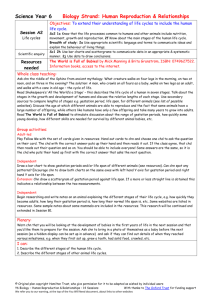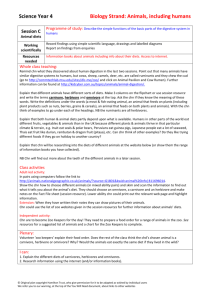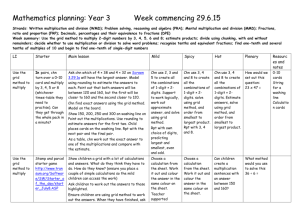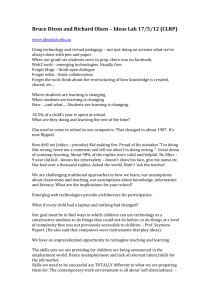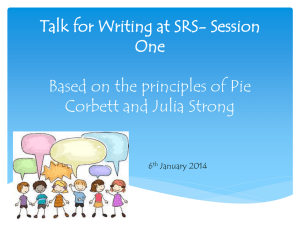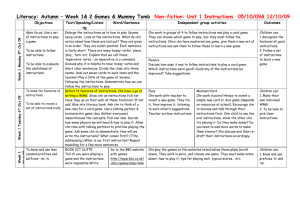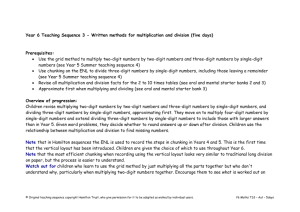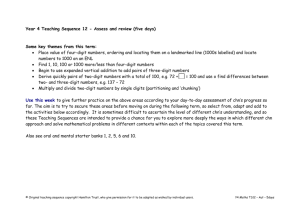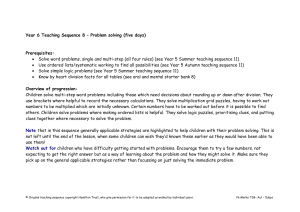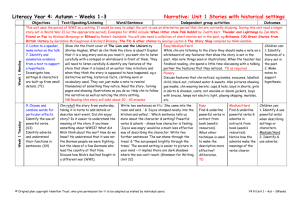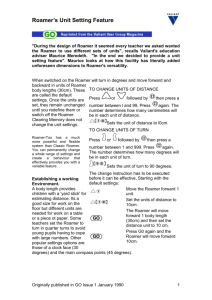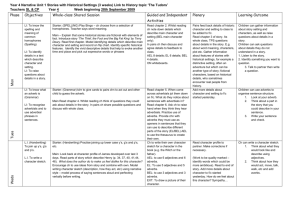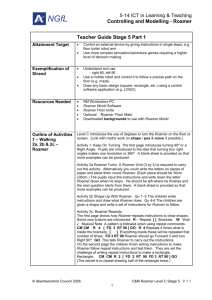Year 2 Teaching Sequence xxx
advertisement
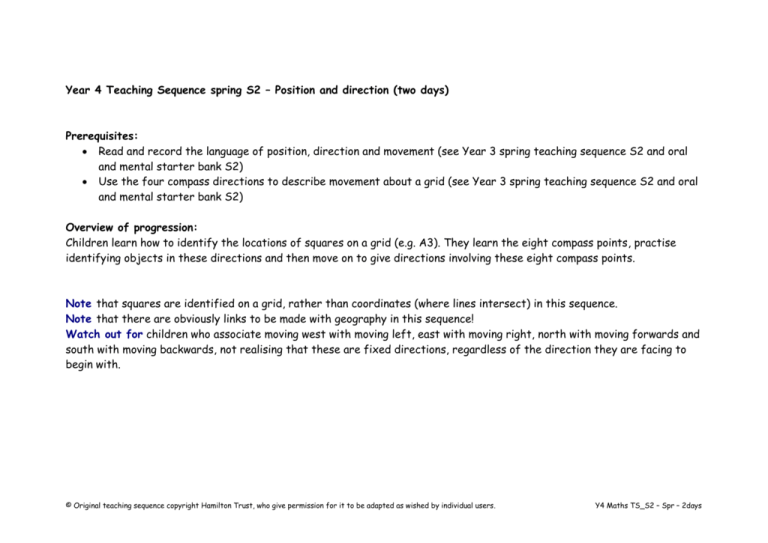
Year 4 Teaching Sequence spring S2 – Position and direction (two days) Prerequisites: Read and record the language of position, direction and movement (see Year 3 spring teaching sequence S2 and oral and mental starter bank S2) Use the four compass directions to describe movement about a grid (see Year 3 spring teaching sequence S2 and oral and mental starter bank S2) Overview of progression: Children learn how to identify the locations of squares on a grid (e.g. A3). They learn the eight compass points, practise identifying objects in these directions and then move on to give directions involving these eight compass points. Note that squares are identified on a grid, rather than coordinates (where lines intersect) in this sequence. Note that there are obviously links to be made with geography in this sequence! Watch out for children who associate moving west with moving left, east with moving right, north with moving forwards and south with moving backwards, not realising that these are fixed directions, regardless of the direction they are facing to begin with. © Original teaching sequence copyright Hamilton Trust, who give permission for it to be adapted as wished by individual users. Y4 Maths TS_S2 – Spr – 2days Objectives: Recognise horizontal and vertical lines Use the 8 compass points to describe direction Describe and identify the position of a square on a grid of squares Whole class Group activities Paired/indiv practice Resources Show the sailor’s map (see resources). Where is the Wrecker’s Rock lighthouse? Draw out descriptions such as north of Seal Cove and west of Palm Island. But we can also give the position of the square it’s in on the map. Discuss how the map is criss-crossed by lines. Some are horizontal (point out which way these go) and some are vertical (point out which way these go). Horizontal lines go along – they follow the horizon! The lighthouse is in square A5. Show children how to go along to column A and then up to the fifth row to identify the square. Point out that this is a more precise way of locating the lighthouse. What is in square D4? Practise both identifying what lies in given squares, and identifying the position of other places on the map. Write North, West, South and East on separate pieces of card, and use a compass to put these in the correct places in the Group of 4-5 children Secretly identify a square on the sailor’s map and ask chn to guess it. Give clues such as If I look north I can see Bone Island. Chn play the game in pairs, taking it in turns to choose a position on the map. Easier: Place a boat on the map and ask chn to identify its position and describe what can be seen in each of the eight compass directions, before moving on to play the game. Chn identify the position of squares on a grid to crack a mystery code. Easier: Chn identify the positions of buried treasure, and then mark on their own. Harder: Chn could also make up their own secret message by giving the locations of squares on the grid. Sailor’s map (see resources) Activity sheets (see resources) Group of 4-5 children Place the roamer on the floor so that it faces north. Next we want it to face Chn work in pairs to write directions for a route so that someone could find all items of Compass Sailor’s map (see resources) © Original teaching sequence copyright Hamilton Trust, who give permission for it to be adapted as wished by individual users. Y4 Maths TS_S2 – Spr – 2days classroom. Remind chn of the four points of the compass. Identify an object that is between north and east, e.g. the door. Where is the door? It’s between north and east, we call the direction that is half way between north and east, north-east. Draw an eight point compass on the board, with only north, east, south and west labelled. Talk to your partner about what the other points might be called. Take feedback and agree south east, south west and north west. Point out that north or south comes first in the directions. What part of the country do we live in? Play ‘I Spy’, e.g. I spy something beginning with ‘l’ in the southwest. I spy something beginning with ‘s’ in the northeast. Show the sailor’s map (from yesterday). The boat wants to go to Palm Island, what direction does it need to go in? Discuss how it could go north, then east, but it would get there more quickly if it sailed north-east. north-east. A whole turn would be 360°. Try out chn’s suggestions on how this might be done. Repeat for facing east, south-east, south, south-west, west and north-west. Draw out that the Roamer turns an eighth of a whole turn each time and that this is 45°. Place a piece of paper with a house drawn on it on the floor, e.g. to the north east, and place an obstacle in the way, e.g. a drawing of a lake. Let’s help him to find his way home, he can only make half, quarter and one eighth turns. Take chn’s suggestions to write a simple program to make the roamer move towards the piece of paper, testing them out a stage at a time. Harder: Mark the starting position of the toy, and ask chn to write a program so that the toy retraces its steps. treasure on the map (see resources). Harder: Chn find the most efficient route. © Original teaching sequence copyright Hamilton Trust, who give permission for it to be adapted as wished by individual users. Roamer (or similar) Activity sheet of treasure map (see resources) Y4 Maths TS_S2 – Spr – 2days




